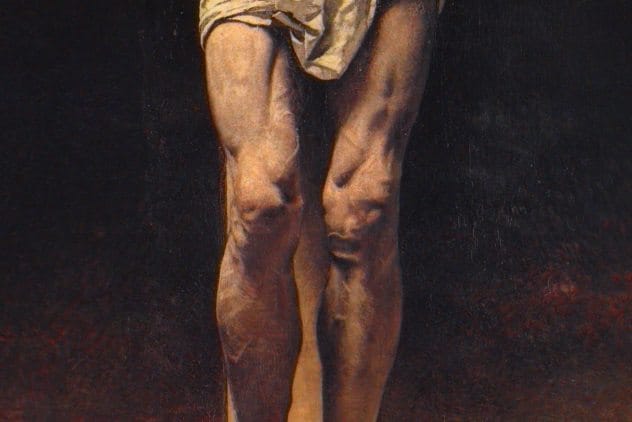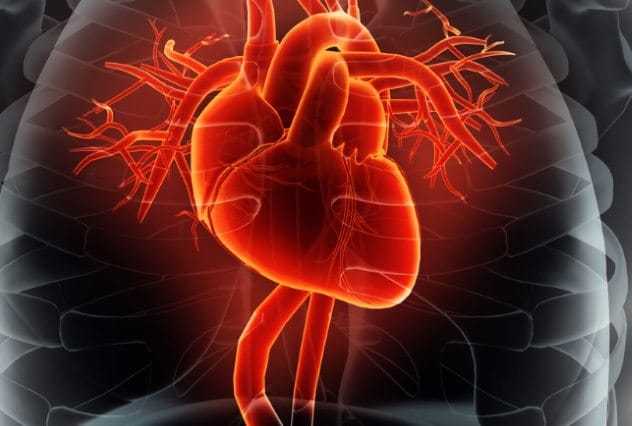Torture has been a part of society for centuries, used for punishment, extracting information, and deterring others. Among the various methods, crucifixion stands out as a particularly excruciating form, perfected by the Romans. It’s infamously known as the method used to execute Jesus. But what exactly made crucifixion so painful? It wasn’t just the nails; the human body underwent a series of physiological responses that few truly understand. Medical science now sheds light on these gruesome realities. Let’s delve into ten excruciating medical facts about crucifixion that you likely never knew.
Victim Suffocates to Death

One of the most probable causes of death during crucifixion is suffocation. The victim’s body weight pulling down on the diaphragm complicates breathing. To alleviate this, the person would push up from the legs and pull up from the wrists. As the leg muscles tire, the victim is forced to hang limp, struggling for breath. This agonizing process continues until the leg muscles give out completely, leading to suffocation.
Legs Might Be Broken

To hasten death, executioners sometimes broke the victim’s legs, typically the femur bones. This prevented the individual from pushing up to breathe, thus accelerating suffocation. A broken femur is known to be incredibly painful. Beyond the physical agony, the psychological impact of impending death adds another layer of torture. Although the crucified person might wish for death to end the suffering, the instinct for survival remains strong, making the process of forced suffocation even more unbearable.
Nerve Damage from Nails

The nails piercing the wrists would often hit the main nerve running through the arm. Each time the victim attempted to breathe by pushing up, the wrists rotated against the nail, irritating the nerves. This caused intense, recurring pain. The constant exposure of the nerve to the metal created unrelenting agony that intensified with every breath.
Flesh Torn Before Crucifixion

Crucifixion was often preceded by flogging. The victim was beaten with a nine-tailed whip tipped with metal and bone fragments. These whips tore into the back, buttocks, and legs, ripping away skin and muscle. This process, designed to mar the victim beyond recognition, resulted in significant blood loss and put the body into shock even before the actual crucifixion began.
Wooden Splinters Worsened Wounds

After flogging, the victim was forced to carry a rough, splintered wooden beam to the crucifixion site. This beam rubbed against the open wounds on the back, causing splinters to lodge in the flesh. As the condemned shifted weight, the jagged wood further tore the wounds, adding to the continuous pain.
Hypovolemic Shock

The severe flogging often led to hypovolemic shock, a condition resulting from the loss of 20 percent or more of the body’s blood supply. This blood loss reduces oxygen levels and impairs the heart’s ability to pump blood, leading to nausea, sweating, dizziness, confusion, and potential loss of consciousness. Vomiting, a frequent symptom, could hasten suffocation.
Shoulder Dislocation

During the process of raising the crucified victim, the shoulders often dislocated. With the wrists nailed to the horizontal beam and the feet not yet secured, the weight of the body would pull the shoulders out of their sockets. This also caused the wrists to dislocate. The arms would extend beyond their normal reach, causing the chest cavity to protrude, making exhaling nearly impossible and leading to a buildup of carbon dioxide in the body.
Cardiac Stress and Hyperventilation

The body’s natural response to insufficient oxygen is hyperventilation. However, the constraints of crucifixion made proper breathing impossible, causing the heart to pump harder to compensate. This cardiac stress could lead to a rupture of the heart. Symptoms such as fever and anxiety further complicated the pain, exacerbating the already intense suffering.
Muscle Cramping and Spasms

On the cross, the knees were typically bent at a 45-degree angle, forcing the victim to support their weight with the thigh muscles. Maintaining this position for hours or even days caused severe muscle cramping and spasms. Despite the extreme pain, the instinct for survival compelled the condemned to resist these spasms in order to breathe.
Pain in Vital Organs

The positioning on the cross interfered with the body’s natural ability to circulate blood and oxygen to the vital organs. With the arms and legs immobilized, and gravity pulling blood downwards, the organs were deprived of proper oxygen flow. In response, the organs signaled the brain through pain, adding another layer of excruciating torture.
It’s crucial to remember that these tortures occurred simultaneously, creating immense physical and psychological trauma. Crucifixion was not just about the nails; it was an agonizing, prolonged process designed to inflict maximum suffering.
Leave your comment below to share your thoughts on this historical form of torture.










